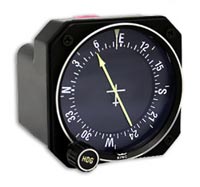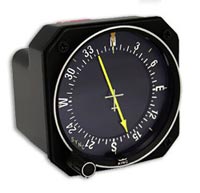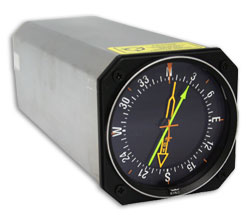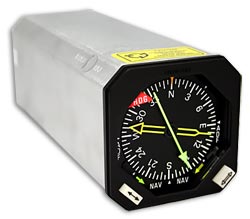| Part #: | 066-3038-01 |
|---|---|
| Model: | KI-229 |
| Desc: | RMI |
| OEM: | BendixKing |
| NSN: | 5826-01-309-5690 |
|---|---|
| Sched-B: | 8526910010 |
| ECCN: | 7A994 |
| Cage Code: | 22373 |
 Select part number above to view pricing and availability.
Select part number above to view pricing and availability.
| Price | Condition | Availability | Stock Info | |
|---|---|---|---|---|
| Price | Cond. | Avail. | Stock Info | |
| $1,750.00 | OH OUTRIGHT | IN WORK |
|
|
| $1,250.00 | OH EXCHANGE | IN WORK |
|
|
| REQUEST | NEW OUTRIGHT | REQUEST LEAD TIME |
|
| Price | Condition | Availability | Stock Info | |
|---|---|---|---|---|
| Price | Cond. | Avail. | Stock Info | |
| $1,450.00 | OH OUTRIGHT | REQUEST LEAD TIME |
|
|
| $995.00 | OH EXCHANGE | REQUEST LEAD TIME |
|

KI-229
FEATURES
- Radio Magnetic Indicator provides bearing information to either ADF or VOR stations by means of two pointers each of which is read against compass card
- Models available with 14/28 or 5 volt lighting (see table below)
- Compatible with Nav Receivers such as KN-53, KNR-615, KNR-630/631/632/633, KNR-634, KNR-665, and KNR-665A
- Compatible with Nav systems including RNAV such as KNS-80 and KNS-81
- Compatible with ADF receivers such as KR-87 and KDF-806
- Compatible with Compass systems such as KCS-305 and KCS-55/55A
- Requires input ARINC Compass System
- TSO'd
SPECIFICATIONS
| TSO Compliance: | Env. Cat. RTCA DO-160A A1C1/A/SKP/XXXXXXA/B/AAA | Weight: | 2.8 lbs. |
| Temperature: | -20 to +55C | Altitude: | 35,000 feet |
| TSO (Compass): | TSO C6c | TSO (ADF): | TSO C41c Class A |
| TSO (VOR): | TSO C40a | Heading Input: | Operates from any slaved magnetic compass with ARINC X,Y,Z outputs |
| VOR Video Input: | 0.5VRMS 0 deg. phase composite 30Hz variable AM and 30Hz reference FM on a 9960Hz carrier (0.7VRMS maximum) |
| Part Number: | Description: |
|---|---|
| 066-3038-00 | Radio Magnetic Indicator with 14/28 Volt Lighting |
| 066-3038-01 | Radio Magnetic Indicator with 5 Volt Lighting |
| Price | Condition | Status |
|---|---|---|
| $1,450.00 | OH OUTRIGHT | REQUEST LEAD TIME |
| $995.00 | OH EXCHANGE | REQUEST LEAD TIME |
Click on a question below to see the answer. If you have a question about this model that is not answered below, please contact questions@seaerospace.com
Why do some parts indicate "REQUEST" or “RFQ” on the Southeast Aerospace website?
In relation to NE (New) parts, many OEMs change their prices and availability without any notice to dealers or the industry. Therefore, through the REQUEST or RFQ indication, we ask that customers contact us for the most accurate price and availability.
In relation to SV & OH parts, the used parts aftermarket in the aviation industry is not an infinite supply. It is a dynamic, constantly changing market that is significantly affected by and susceptible to highs and lows in supply and demand. Therefore, although we attempt to, at times, we are unable to predict the exact moment when an item may be available. Once again, through the REQUEST or RFQ indication on our website, we ask that customers contact us for the most current and accurate price and availability.
Do I need 26V AC to operate the KI-229 RMI in my aircraft?
From time to time, customers who are installing KI-229 RMIs will need a 26VAC inverter to operate the RMI in their aircraft. 26VAC is required to excite the KI-229. The Mid-Continent MD26-28 inverter is recommended.
What is the difference between Honeywell (Bendix/King) part numbers with 9 digits vs. 12 digits?
How does the KI-229 RMI work?
Why did Bendix/King change their part numbers from a 9 digit to a 12 digit format?
Different software versions imply different operational features and/or interface capabilities and software modifications imply software repairs (bug fixes) to insure proper operation of these features and interfaces. Software version upgrades frequently require hardware modifications to the unit. Such hardware modifications accompanying software version upgrades do not necessarily change the hardware version of the unit.
What are the advantages of installing an RMI over an ADF indicator?
The use of a Radio Magnetic Indicator in an aircraft offers several benefits that improve navigation situational awareness and pilot workload.
A very basic ADF indicator without a moveable compass card simply points to a selected beacon. The pilot must calculate the bearing needed based on the aircraft's current heading. Most if not all ADF indicators without a knob to turn the compass ca rd are very old and obsolete.
Most ADF indicators include a knob to turn the present heading so that the bearing to the beacon can be read against the compass card.


The RMI provides all of the ADF indicator functions with automatic rotation of the compass card via the aircraft's compass system. Therefore, whenever the aircraft turns then the compass card will turn.
An RMI always automatically points to the bearing to a beacon. This is a more logical form of indication even over VOR type of navigation since there is no OBS, To-From, radials, etc.

More advanced RMI indicators offer even more flexibility and features by offering dual needle for ADF and VOR bearing and multiple ADF/VOR navigation.

Are SEA's Exchange prices negotiable?
Negotiating the exchange price of a unit only limits the allowable repair cap for the core unit. Southeast Aerospace's exchange transactions are based on the return of economically repairable core unit. Once the core is received and evaluated, the core repair cost incurred by SEA cannot exceed 75% of the original exchange price. That is, it cannot cost SEA more than 75% of the original OH/SV exchange price collected from the customer. Therefore, when and if an SEA exchange price is discounted, there is a risk that additional charges may be assessed once the core is returned and evaluated.
Is there another indicator that directly replaces the KI-226?
No, but the newer Bendix/King KI-229 provides all of the same features, interfaces and more compared to the KI-226. Originally manufactured in the 1970s, the KI-226 is obsolete, unavailable, and not supportable.



